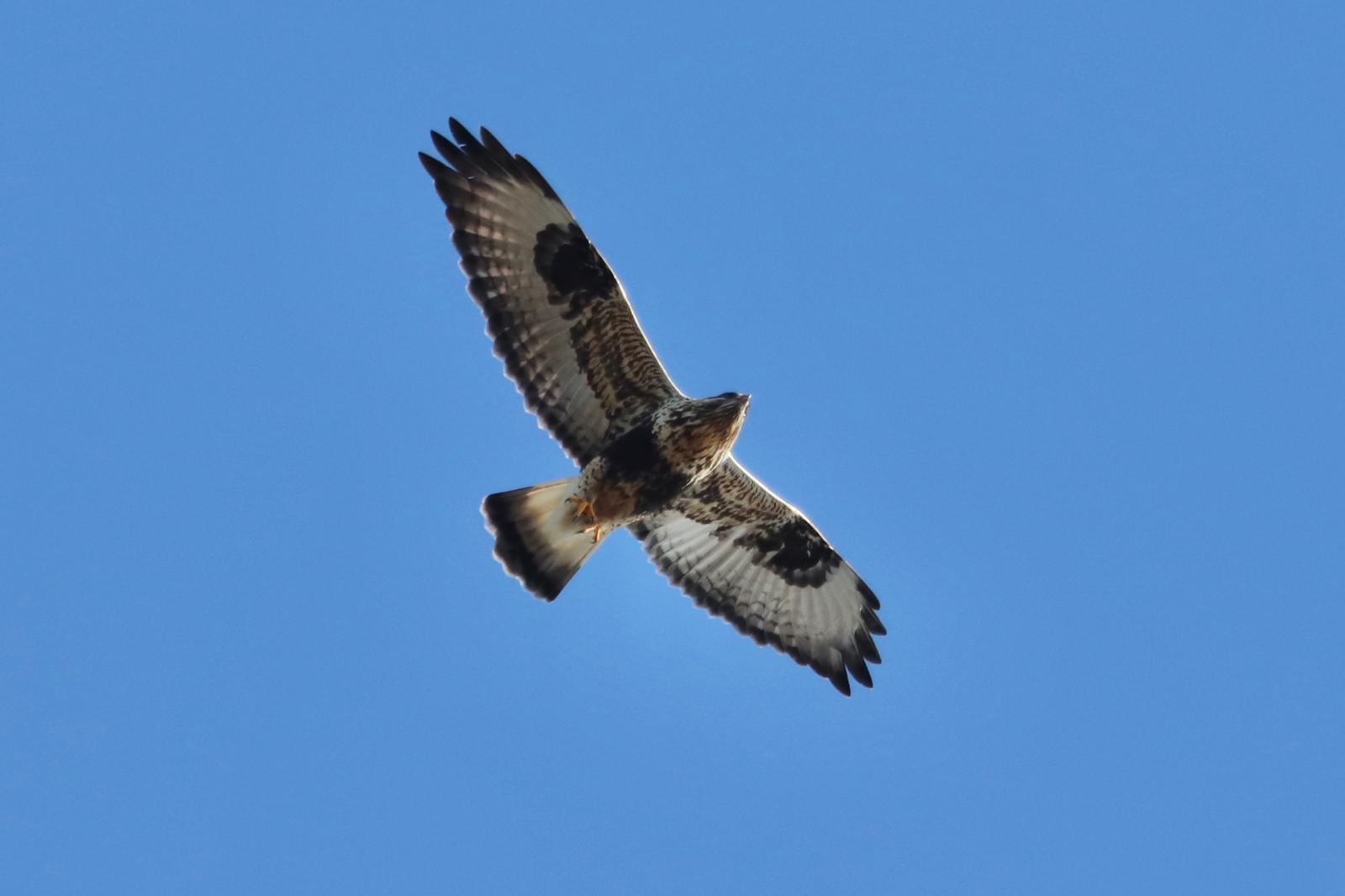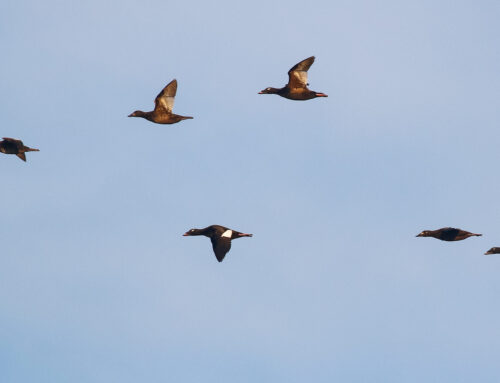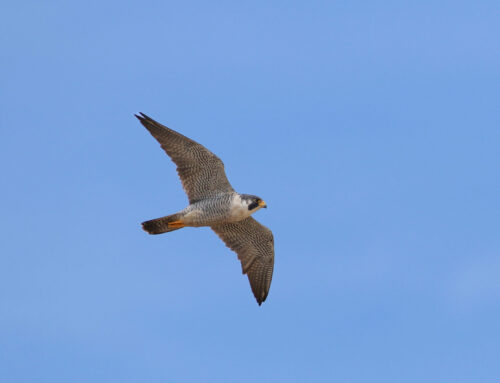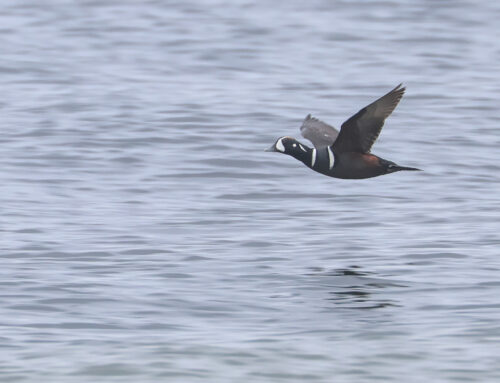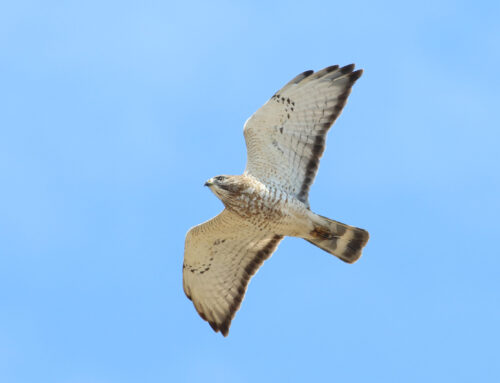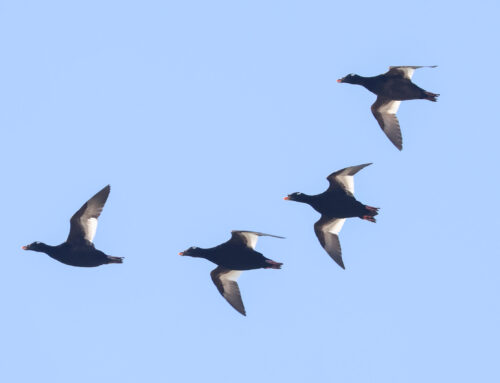Birds of prey are charismatic. With their interesting behavior and captivating presence, it’s easy to understand how they attract this attention. Though Whitefish Point is not known for large numbers of migrating fall raptors, we see our share of them pass through. If a sweep of the horizon turns up empty, we often start looking up for hawks and their relatives. We owe them an honorable mention at the fall waterbird count.

Immature Sharp-shinned Hawk
Typically raptors follow shorelines around bodies of water on their migrations. This trend speaks to why we see so many more on their northbound journeys as opposed to when they set south. With that said, it’s well known if you set any rules in nature, hordes of outliers will break them. Today alone, we documented twenty Rough-legged Hawks crossing over Lake Superior on their way south, bucking this trend. These hawks seem to enjoy a headwind to soar slowly across the lake, allowing prolonged views of these gorgeous birds. In addition to the ones we only see on the move, many stay for a period. In the first half of the count season, we were delighted to watch the resident Merlins in action every morning. Last week we had all three Accipiter species in one day (Sharp-shinned Hawk, Cooper’s Hawk, and Northern Goshawk). Rarely a day goes by without seeing at least one Bald Eagle (often making a pass at the gulls in the harbor). Though we don’t see any of these birds in the numbers we do in spring, or the quantity fall hawkwatches do, they are very much a component of the fall birding at Whitefish Point.

Immature Northern Goshawk
Seeing how a bird looks is such a small part of what encompasses its whole. For instance, some of the most beautiful songs come from fairly drab birds (Swainson’s Thrush and Winter Wren come to mind), so to simply see them is such a small part of their story. With many raptors, their flight tells so much about them. Seeing a Merlin relentlessly attack songbirds in midair is a sight to behold. Peregrines in their stoop dives put them on the map as the fastest known animal alive (clocked at 242 mph). The seemingly effortless flight of a soaring hawk, circling its way aloft by utilizing a thermal of rising warm air, is a welcome spectacle. I could go on with flights and behaviors that raptors are known for, as I’m sure you could as well, but what is clear is that their flight and behavior is an integral part of our experiences with them.
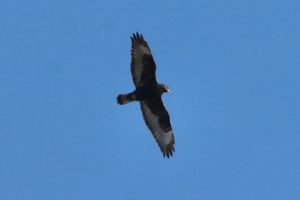
Dark-morph Rough-legged Hawk
Identifying birds of prey is often a challenge. The combination of juvenile, immature, and adult plumages complicated by several possible color morphs creates an intimidating variety of options for many species. Luckily, these large birds often display multiple field marks in flight and some characteristic flight traits. To be honest, I’m much more comfortable identifying most raptors in flight as opposed to motionlessly perched. These aforementioned flight traits, how they hold their wings and fly, combined with their body structure, give us immediate clues to help narrow things down. You know many of these: The often broad rounded wings of owls contrasts greatly with the narrow pointed wings of falcons, for instance. Still, getting a raptor identified to a species is not often easy, and they break the rules of field guides at times. Many people are frustrated by this, but I’d say this just speaks to the immense diversity of bird-life we’re able to witness, and that’s what brought many of us to birds in the first place (I say the same about gulls, but that often falls on deaf ears)!
The seasonal changes that we see in other bird migrations are apparent in raptors as well. We started our count season watching kettles of Broad-winged Hawks meander by as kestrels roamed the beaches. Today both those species are long absent, replaced with a different suite of birds of prey. While this fall migration possesses much more quantity and variety in other nearby areas (Point La Barbe as an example), Whitefish Point is still graced with these captivating birds. Though waterbirds are our focus during this count, they are but one component of the story of migration here. Raptors compose another, more subtle, element of this grand narrative.
Photos by Oliver Kew
Text by Fall Waterbird Counter Steve Backus

